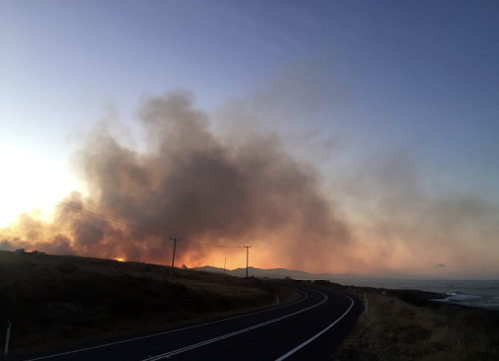
By David Bruce, Bushfire and Natural Hazards CRC
The most significant natural hazard emergency management issues Australia faces have been drawn up by leaders from the sector to guide research over the next decade.
A set of priorities for national research into natural hazards was launched by the Bushfire and Natural Hazards CRC in July and is now online for broader discussion. The priorities arose out of a series of national workshops with the emergency management sector that led to consideration by the Australia-New Zealand Emergency Management Committee.
This is the first time such a future-thinking exercise has been undertaken on natural hazards research in Australia. With the economic costs of disasters in Australia expected to increase from $9 billion to $33 billion per annum by 2050, Bushfire and Natural Hazards CRC CEO Dr Richard Thornton believes that the difficult and complex questions must be asked.
‘As a nation, we have a moral and economic obligation to mitigate against the impact of natural hazards,’ Dr Thornton said.
‘As members of the emergency management sector, we have a responsibility to identify the major issues that need to be addressed to build safer and more resilient communities.
‘As members of the research community, we have a responsibility to apply our skills, knowledge and creativity to identify potential solutions and bring them to fruition,’ he said.
The CRC steered the process that began with a review of its entire research agenda in late 2016.
‘We did this to help people understand that if they are spending research money or commissioning research then they can look at the priorities that the whole sector has indicated are important. That allows us to work together to solve some of those issues rather than have competitive approaches,’ he said.
The CRC will promote these priorities and discuss their potential with funding groups such as the Australian Research Council and National Health and Medical Research Council.
‘One thing we did was go out to the emergency management sector and come up with a list of the things that are critical from a research perspective. We did that by sitting down with about 16 different groups at workshops all around the country covering everything from mitigation, diversity, warnings and volunteering, through to the mechanic, physics and meteorology of hazards, right through to recovery, picking up important contributors like insurance, urban planning and urban operations.
‘We took a broad, whole-of-sector approach to come up with a set of research questions that spelled out the most significant natural hazard emergency management issues Australia faces over the next decade,’ Dr Thornton said.
There were four key drivers that consistantly came across at the workshops, being:
‘Shared responsibility and community engagement considers how governments help communities manage and understand their own risk. How can governments collaborate effectively with communities to break down silos and build trust?

‘Risk communication and understanding the benefits of mitigation arises as agencies and governments often struggle with how to communicate risk in a way that is personalised for the community and the individual.
‘The CRC has done post-event analysis and one of the constant refrains we hear from the public is “we knew this was a risky area to live in, but we didn’t believe it was a risk for us”. It’s always going to be a risk for somebody else. So we need to find ways to get beyond that.
‘We also found that it is difficult to understand the economics that underpin the benefits of mitigation. We know that to avoid an event is instinctively better than to have to recover from it, but it’s actually a hard economic discussion to have with treasuries of all levels of government. It means investing today in something that might not happen for 50 years or more. And you are counting saves and not impacts.

‘The third major area was the impact of climate change and how it will alter the hazard profiles across Australia. What mitigation should we be doing today and how do we consider potential increases in hazards from climate change? How do we incorporate future climates into operational decisions that includes cumulative disasters where hazards become more prevalent, such as two major flood events one after the other?
‘And finally, how do we do better warnings; better weather forecasts, flood forecasts, cyclone prediction and fire prediction. How do we communicate these in ways that are effective as warnings?’ he said.
A national discussion within the emergency management sector has identified themes for research priorities, but this is not intended as a final nor comprehensive list. As new themes and research priorities are identified in coming years, they will be included and published on the CRC website.
The CRC has developed a suite of three publications on national research priorities:
‘We can now say, “Here’s a set of priorities agreed to by the sector. If you want to work on something that’s going to make a difference to community safety and to disaster resilience, then here is a set of shared priorities that sets out some of the big questions that you might want to consider”,’ said Dr Thornton.
The national research priorities for natural hazards emergency management are at www.bnhcrc.com.au/nationalpriorities.